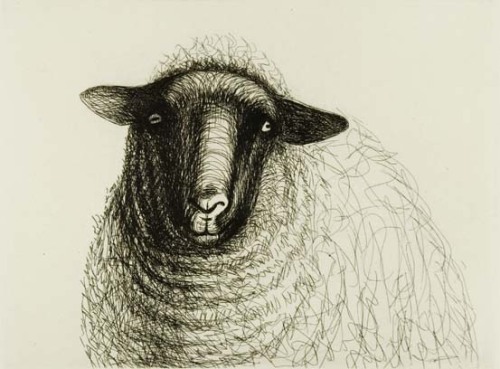Moore lived in Much Hadham, a small village in East Hertforshire, and worked in a small studio overlooking a sheep field. He spent much of his time studying the sheep in his sketchbook, the way they moved, behaved and the shape of their bodies. Moore managed to capture the sheep's faces in very intricate detail, his method was to make a small, sharp noise to grab the sheep's attention so that they would turn to look at the source of the noise for several seconds, with a long, blank stare on their faces.
Moore was fascinated with the mother-child bond of animals, larger forms protecting smaller ones, a theme which is noticeable topic of interest in much of his work. Many of his sheep sketches are of ewes protecting their lambs, one may say a large influence on his artwork. Lord Clark (Civilisation and Landscape into Art) comments that Moore expressed 'a real affection' for his sheep subjects.
 |
| Moore sculpture at Kew Gardens, notice the similarities? |
His sheep sketches are very accurate and first look solid in form when standing from a distance, yet when you get closer to the imagery you start to notice his style. Zig-zags and rushed ball point pen lines dominate the drawings, thicker and more panicked scratches where there is less light and softer yet still sudden and vigorous on the brighter parts of the scene. Moore also rarely started his sketches by outlining his sheep, but started shading straight away, a risky strategy especially with the use of ball point pen but nonetheless effective.
 |
| Moore rarely outlined his sketches before shading |






No comments:
Post a Comment